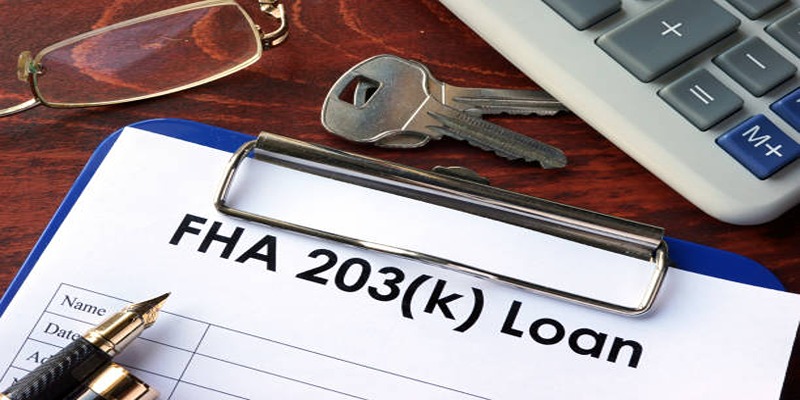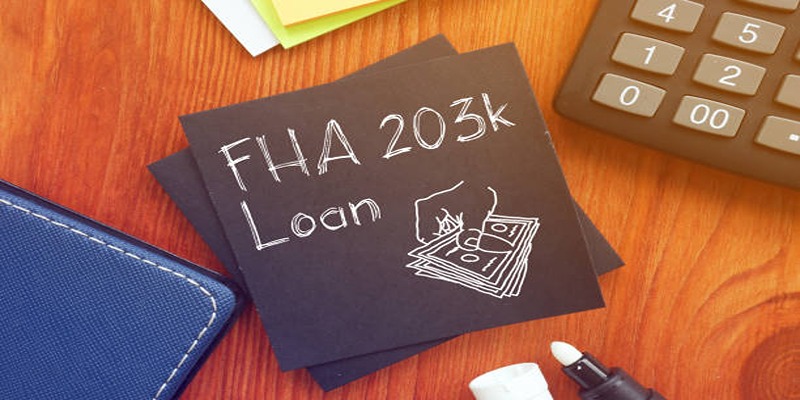The FHA 203(k) loan program is an invaluable tool for homebuyers and homeowners looking to purchase or refinance properties that require rehabilitation or repairs. This government-backed loan not only allows borrowers to finance the acquisition of a home but also includes the costs of necessary renovations in a single mortgage. As a result, this financing option can be particularly appealing for first-time buyers and those looking to invest in fixer-uppers, making homeownership more accessible. Navigating the details of 203(k) loans can be complex, but understanding the benefits, requirements, and process involved can empower borrowers to make informed decisions, ultimately leading to successful homeownership and property improvement. In this guide, we will delve into the essentials of FHA 203(k) loans, helping you unlock the potential of your real estate dreams.
What is an FHA 203(k) Loan?

An FHA 203(k) loan is a type of mortgage that allows homebuyers to finance both the purchase of a home and the costs of its renovation through a single mortgage. This program, backed by the Federal Housing Administration (FHA), is specifically designed for properties that are in need of repair or improvement, enabling buyers to access funds necessary for significant upgrades, repairs, or even complete renovations.
Types of FHA 203(k) Loans
There are two primary types of FHA 203(k) loans: the Standard 203(k) and the Limited 203(k).
Standard 203(k)
The Standard 203(k) loan is designed for more extensive rehabilitation projects that may require structural changes or major repairs. Borrowers can borrow up to $35,000 for repairs in addition to the home purchase price, and funds can be used for a wide range of improvements, including roof replacement, room additions, and structural alterations. However, this type of loan requires a licensed consultant to supervise the project if the total repairs exceed $35,000, ensuring that the renovations align with HUD guidelines and standards.
Limited 203(k)
Conversely, the Limited 203(k) loan is tailored for less extensive projects, allowing for improvements that do not exceed $35,000 in repairs. This option is more straightforward and does not mandate the use of a consultant, making it a streamlined choice for borrowers looking to address specific updates, such as minor kitchen or bathroom remodels, or general cosmetic enhancements. The Limited 203(k) presents a simplified process for those looking to refresh their homes without extensive renovations.
Eligibility Requirements
To qualify for an FHA 203(k) loan, borrowers must meet certain criteria, including credit and income requirements. Additionally, the property being purchased or refinanced must meet specific standards set by HUD, such as being a primary residence and meeting minimum property requirements. These guidelines ensure that the property is safe, habitable, and will maintain its value after renovation.
Credit Requirements
Borrowers are required to have a credit score of at least 580 to be eligible for an FHA 203(k) loan with a down payment of only 3.5%. Those with lower scores may still be able to obtain financing but may need to make a larger down payment or provide additional documentation proving their creditworthiness.
Income Requirements
In addition to credit scores, borrowers must also meet certain income requirements to qualify for an FHA 203(k) loan. Typically, a borrower's debt-to-income ratio (DTI) cannot exceed 43%, meaning that the total cost of monthly debts, including the new mortgage payment, cannot exceed 43% of the borrower's gross income.
How FHA 203(k) Loans Work?
Once a borrower is approved and closes on an FHA 203(k) loan, there are several important steps to understand in the process.
Property Inspection
Before any repairs can begin, a HUD-approved inspector must assess the property's current condition. This inspection will determine the extent of necessary renovations and updates required for the property to meet HUD guidelines. The inspector's report will be used by both the lender and the contractor to establish renovation costs.
Contractor Selection
One of the most critical decisions in the FHA 203(k) loan process is selecting a qualified contractor to complete the renovations. Borrowers must obtain bids from contractors that are licensed and insured, ensuring that they have experience with 203(k) loans and comply with HUD guidelines.
Loan Closing and Disbursement
After the contractor has been selected, the loan closing process can begin. The loan amount will be determined based on the purchase price of the property plus the estimated cost of renovations. Once closed, renovation funds will be placed in an escrow account, and payments to contractors will be made as work is completed.
Project Completion
Once all repairs have been completed, a final inspection will take place to ensure that all work was done according to HUD standards. After successful completion of this inspection, any remaining funds in the escrow account can be used for additional improvements or returned to the borrower.
Costs and Financing Details

Understanding the costs associated with FHA 203(k) loans and the available financing options is crucial for potential borrowers. These loans not only cover the purchase price of the home but also include the estimated costs for renovations, making it important to accurately assess the overall financial commitment.
Upfront Costs
Borrowers should anticipate several upfront costs when applying for an FHA 203(k) loan. These may include appraisal fees, inspection fees, and the costs tied to the loan application process. Additionally, a down payment, which is generally around 3.5% of the purchase price plus renovation costs, is required. However, the amount can vary based on the borrowers credit score and financial profile.
Loan Limits
FHA 203(k) loans are subject to specific loan limits, which vary by location. The maximum loan amount is determined by the Federal Housing Administration and can depend on the county where the property is situated. This limit includes both the purchase price of the home and the renovation costs. Its essential for borrowers to be aware of these limits to ensure that their financing needs align with FHA requirements.
Interest Rates and Insurance
Interest rates for FHA 203(k) loans are typically competitive compared to traditional mortgage options. However, borrowers should also consider the additional cost of mortgage insurance premiums (MIPs), which are required for FHA loans. MIPs cover lenders against losses if borrowers default, and the rates may vary based on the loan amount and down payment size. These costs need to be factored into the borrowers overall budget, as they can significantly impact monthly mortgage payments.
Financing Renovations
Renovation costs can be significant, and financing through an FHA 203(k) loan allows borrowers to spread these expenses over the term of the mortgage. By consolidating both home purchase and renovation costs into one loan, borrowers can avoid high-interest personal loans or credit card debt, making home improvement more manageable and financially feasible. This financing structure helps homeowners invest in their property while building equity over time.
Conclusion
The FHA 203(k) loan program provides a valuable opportunity for potential homeowners and existing homeowners looking to renovate their properties. By combining the costs of purchasing a home with renovation expenses into a single mortgage, it simplifies the financial process and opens doors to homeownership that might otherwise remain closed. Understanding the eligibility criteria, the steps involved in the loan process, and the associated costs is essential for making informed decisions. With careful planning and the right resources, borrowers can successfully navigate the FHA 203(k) loan process, ultimately transforming their vision for a dream home into reality.




